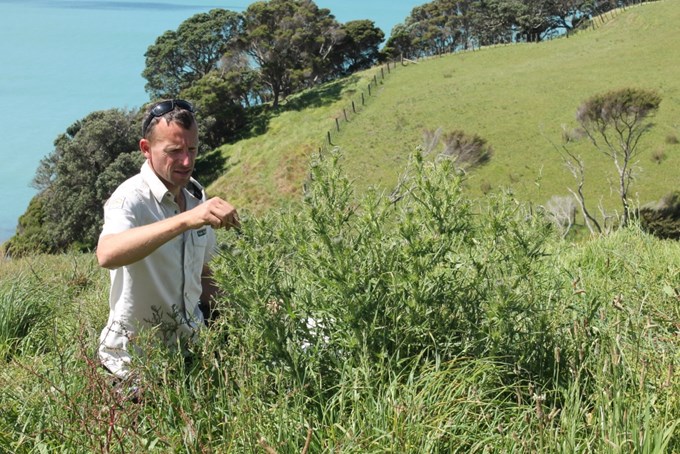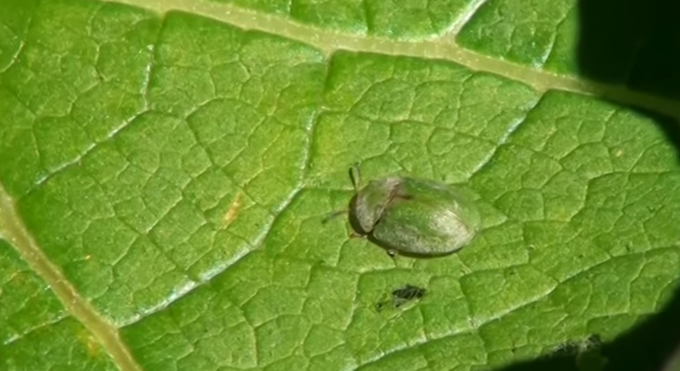A biocontrol beetle swap with Waikato will help both regions fight some nasty weeds.
Senior biosecurity plants advisor Holly Cox travelled to Ngāruawāhia to collect a group of green thistle beetles, which have been released at Duder Regional Park to fight the prickly rural pest.
“The larvae do the most damage, eating away at the leaves, and eventually defoliate plants. They prefer Californian thistle, but will do some damage on other types, like nodding and plumeless,” says Holly.
“The larvae also have a pretty unique camouflage technique. They make a protective canopy out of discarded skin and excrement and carry it on their backs to deter predators like birds.”
“We plan to return the favour and give some tradescantia beetles to Waikato Regional Council to release, so it’s a great collaboration and chance to help each other fight weeds,” says Holly.
Allowing native species to compete
Biological control (biocontrol) is weed control using a weed’s natural enemy. It doesn’t eradicate it but successful biocontrol will weaken a weed and reduce its abundance – making it easier to control with other methods and allowing native species to compete.
Paul Wilson, Auckland Council’s ranger at Duder, is delighted to host the beetle and see it attack the thistles, which are notoriously hard to control.
A serious weed infestation
Thistles are a serious paddock weed, damaging productivity and reducing grazing land for livestock. They grow in dense patches and can achieve almost total ground cover and block access to desirable plants for livestock.
“We have a lot of Californian thistle here and need all the help we can get. We have wonderful volunteers who do grubbing and we’ll continue with targeted herbicide control outside the beetle area, but hopefully the beetles will help reduce the need for this other control in the long term.”
Find out more
See a video of the beetle at work
Read more about the tradescantia beetles in Auckland




